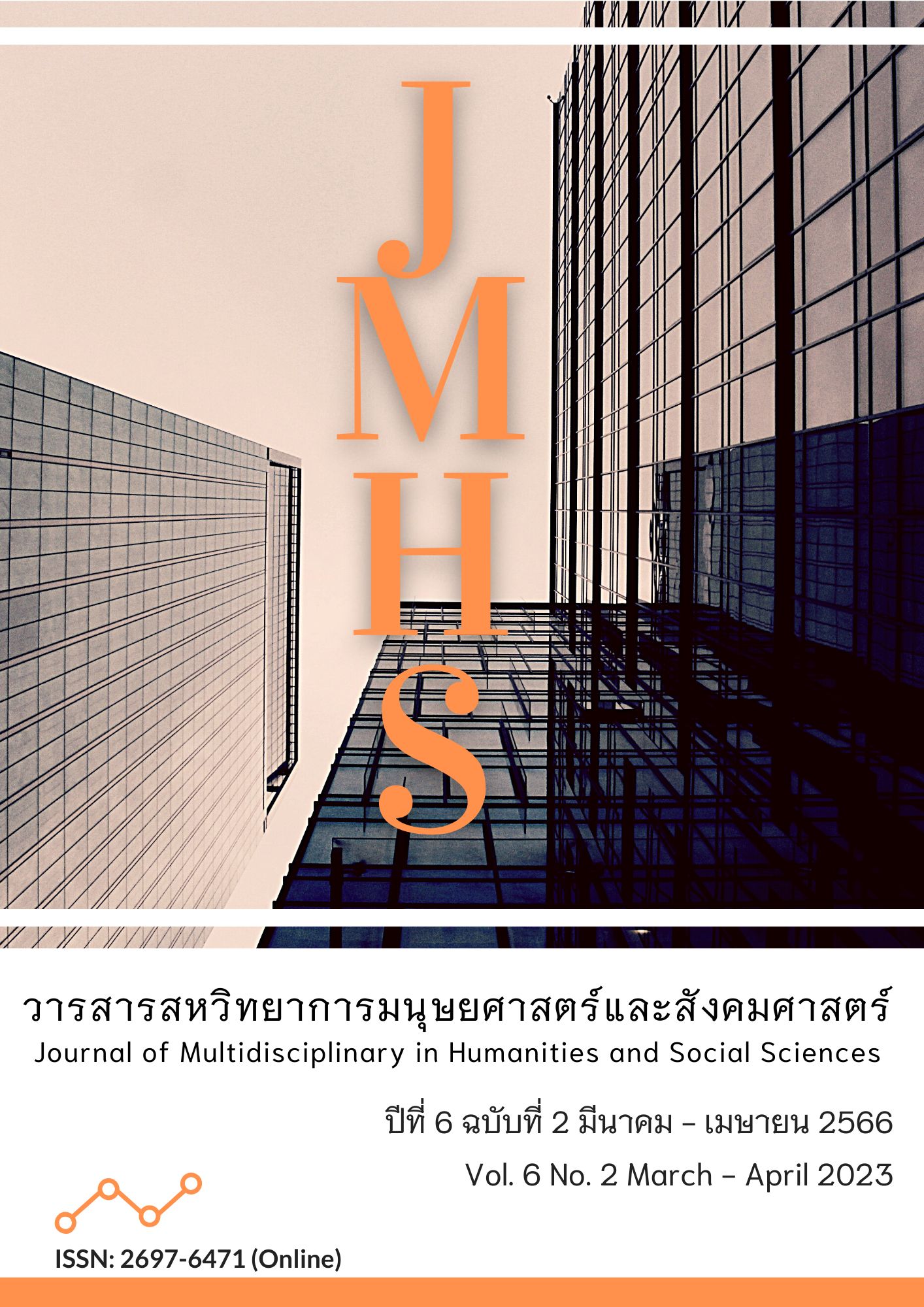Common Grammatical Errors in Academic Writing: How are They Treated by NNE Raters?
Main Article Content
Abstract
This research aimed to investigate common errors produced by Thai EFL learners in their academic writing and to investigate non-native English raters’ perceptions of the common errors. There were two phases: 1) error analysis and 2) raters’ perceptions survey. The samples for the error analysis were 49 written responses from a university entrance examination. The errors were first identified by using Grammarly, and they were coded following the Error Code adapted from Ampornratana (2009), Bootchuy (2008), and Phetdannuea (2016). The research results were found as follows:
1. The results revealed 24 error categories with 97 error types. The 42 sentences that contained the 14 error types that were produced more than 30 times in the samples were used in the questionnaire. The experienced raters rated the sentences in the questionnaire with scores from 1 (i.e., most serious) to 3 (i.e., no error).
2. The results of the raters’ perceptions revealed that the errors concerning articles could be mostly overlooked by experienced raters. Interestingly, none of the 14 common errors was rated “1” more than fifty percent. In other words, although the experienced raters saw the errors, they didn’t see them as serious features of academic writing.
The findings also suggested potential issues for future studies to investigate the application of this phenomenon in pedagogy and assessment.
Article Details

This work is licensed under a Creative Commons Attribution-NonCommercial-NoDerivatives 4.0 International License.
Views and opinions appearing in the Journal it is the responsibility of the author of the article, and does not constitute the view and responsibility of the editorial team.
References
Ampornratana, C. (2009). The Error Analysis on English Composition: A Case Study of Year 6 Students in St. Stephen’s International School(Master’s Thesis). Kasetsart University.
Bachman, L., & Palmer, A.S. (1996). Language testing in practice. New York: Oxford University.
Bootchuy, T. (2008). An analysis of errors in academic English writing by a group of first-year Thai graduates majoring in English(Master’s Thesis). Kasetsart University.
Cavaleri, M.R., & Dianati, S. (2016). You want me to check your grammar again? The usefulness of an online grammar checker as perceived by students. Journal of Academic Language & Learning, 10(1), A223-A236.
Cogo, A., & Dewey, M. (2012). Analysing English as a lingua franca: A Corpus Driven Investigation. London: Continuum.
Ghufron, M.A., & Rosyida, F. (2018). The Role of Grammarly in Assessing English as a Foreign Language (EFL) Writing. Lingua Cultura, 12(4), 395-403.
Grabe, W. & Kaplan, R.B. (1996). Theory and practice of writing. New York: Longman.
Jenkins, J. (2006). The spread of EIL: a testing time for testers. ELI Journal, 60(1), 42-50.
Jenkins, J. (2007). English as a Lingua Franca: Attitude and Identity. New York: Oxford University.
Jenkins, J. (2016). English as a Lingua Franca in the international university: the politics of academic English language policy. Abingdon: Routledge.
Kaweera, C. (2013). Writing Error: A Review of Interlingual and Intralingual Interference in EFL Context. English Language Teaching, 6(7), 9-18.
Laitinen, M. (2020). Empirical perspectives on English as a lingua franca (ELF) grammar. World Englishes, 39(3), 427-442.
Lowenberg, P.H. (2000). Non-native varieties and the sociopolitics of English proficiency assessment. In Kelly J.H. & Eggington W.G. (Eds.), The sociopolitics of English language teaching (pp. 67–85). Clevedon:
Multilingual Matters.
Madsen, H.S. (1983). Techniques in testing. New York: Oxford University.
O’Neill, R., & Russell, A.M.T. (2019). Grammarly: Help or hindrance? Academic Learning Advisors’ perceptions of an online grammar checker. Journal of Academic Language & Learning, 13(1), A88-A107.
Pakir, A. (2009). English as a lingua franca: analyzing research frameworks in international English, world Englishes, and ELF. World Englishes, 28(2), 224-235.
Phetdannuea, P., & Ngonkum, S. (2016). An Analysis of Interlingual Errors and Intralingual Errors in Thai EFL Students’ Writing at Khon Kaen University. KKU Res J HS (GS), 4(2), 35-51.
Qassemzadeh, A., & Soleimani, H. (2016). The Impact of Feedback Provision by Grammarly Software and Teachers on Learning Passive Structures by Iranian EFL Learners. Theory and Practice in Language Studies, 6(9), 1884-1894.
Seidlhofer, B. (2001). Closing a conceptual gap: the case for a description of English as a lingua franca. International Journal of Applied Linguistics, 11(2), 133–158.
Seifried, J., & Wuttke, E. (2010) Student errors: how teachers diagnose them and how they respond to them. Empirical research in vocational education and training, 2(2), 147-162.
Weigle, S.C. (2002). Assessing Writing. Cambridge: Cambridge University.


